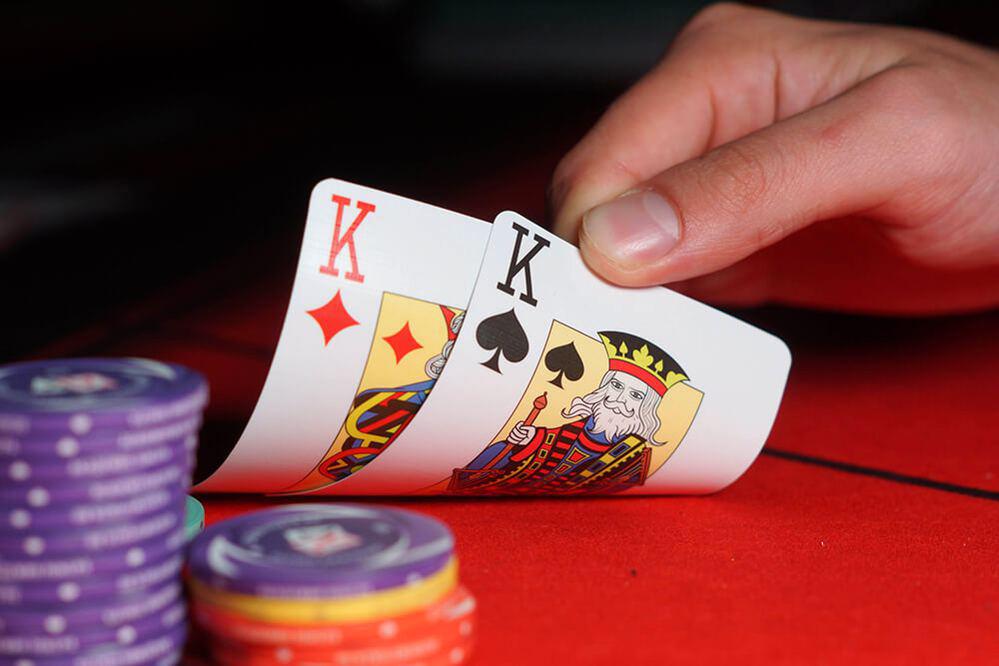Texas Hold’em is the most popular poker variant played in casinos in the United States. The simplicity and popularity of hold’em has inspired many strategy books that provide guidance on how to play the game correctly. The game’s popularity skyrocketed in the 2000s due to its exposure on television, the Internet, and popular literature.
Rules of the game
Before and after each card is revealed, players take turns betting. To stay in the hand and see the next card, all players must put the same number of chips into the pot. The best poker hand wins the pot.
- Deal
Each player is dealt two cards for his eyes only.
The dealer deals five cards three at once, then another, then another which all players can use to make their best five-card hand possible.
- The game
In hold’em, each player is dealt two hole cards (known as “hole cards”), which belong only to him. Five community cards are dealt face up to form a “board”. All players in the game use these community cards in combination with their own hole cards to make each of them make the best possible five-card poker hand.

In hold’em, a player can use any combination of the seven available cards to make the best five-card poker hand possible using zero, one, or two of their hole-up hole cards.
- Blinds
In hold’em, a marker called the “button” or “dealer button” indicates which player is the dealer in the current game. Before the game begins, the player immediately clockwise from the button posts the “small blind”, the first forced bet. The player immediately clockwise from the small blind posts the “big blind”, which is usually twice the size of the small blind, but the blinds can vary depending on the stakes and betting structure.
In limit games, the big blind is equal to the small bet, and the small blind is usually half the size of the big blind, but can be higher depending on the stakes. For example, in a $2/$4 limit game, the small blind is $1 and the big blind is $2. In a $15/$30 limit game, the small blind is $10 and the big blind is $15.
In Pot-Limit and No-Limit games, games are referred to by their blinds (for example, in a $1/$2 hold’em game, the small blind is $1 and the big blind is $2).
Depending on the exact structure of the game, each player may also be required to put in an “ante” (another type of forced bet, usually less than any blind that all players at the table) put into the pot.
Now each player receives his two hole cards. Betting action occurs clockwise around the table, starting with the player “under the gun” (immediately clockwise from the big blind).

Some betting options per player
In hold’em, as in other forms of poker, the following actions are available: “fold”, “check”, “bet”, “call” or “raise”. Exactly which options are available depends on the actions taken by previous players. If no one has yet bet, the player can either check (refuse to bet but keep his cards) or bet.
If a player has bet, subsequent players may fold, call, or raise. To call means to match the previous player’s bet amount. To raise means not only to equalize the previous bet, but also to increase it.
- Preflop
After seeing their hole cards, each player now has the opportunity to play their hand by calling or raising the big blind. The action starts to the left of the big blind, which is considered a live bet in this round. This player has the option to fold, call, or raise. For example, if the big blind is $2, it will cost $2 to call, or at least $4 per raise.
The action then continues clockwise around the table.
Betting continues on each betting round until all active players (who have not folded) have placed the same bet in the pot.
- Flop
Three cards are now dealt face up on the board. This is known as the “flop”. In hold’em, the three cards on the flop are the community cards available to all players in the hand. Flop betting starts with the active player immediately clockwise from the button. Betting options are similar to preflop, however, if no one has previously bet, players can choose to check by passing the action to the next active player in clockwise order.
- Turn
When the betting action for the flop round is complete, the “turn” is dealt face up to the board. The turn is the fourth community card in Hold’em (sometimes also called “fourth street”). Another round of betting occurs, starting with the active player immediately clockwise from the button.
- River
When the betting action is completed for the turn round, the “river” or “fifth street” is dealt face up on the board. The River is the fifth and final community card in Hold’em. Betting starts again with the active player immediately clockwise from the button and the same rules apply.la rates, as for the flop and turn, as described above.
